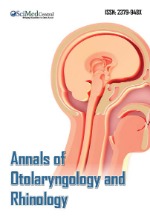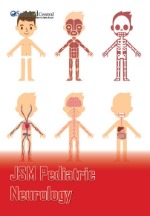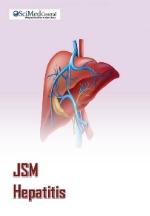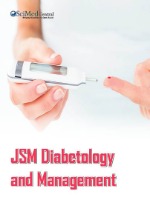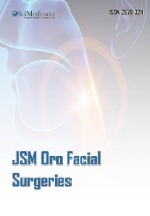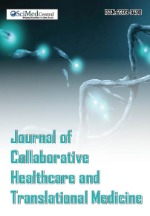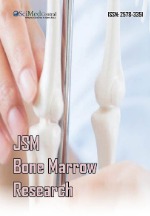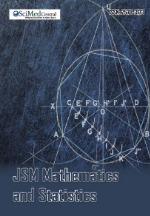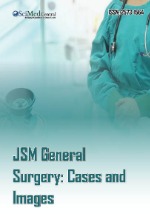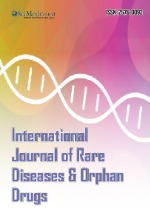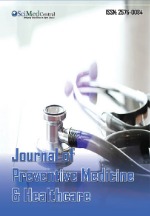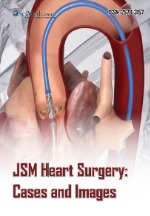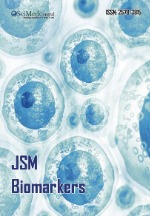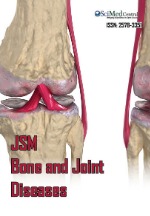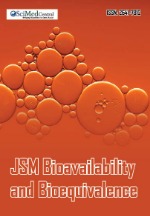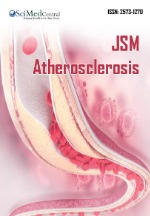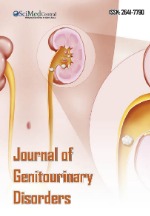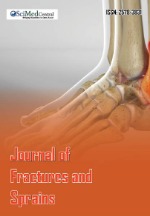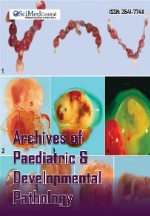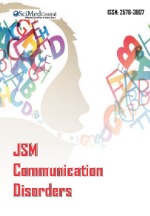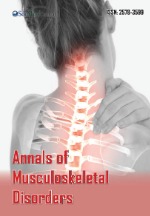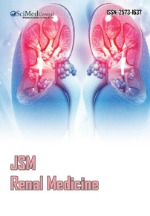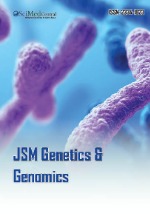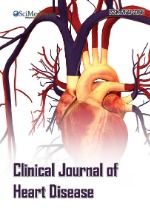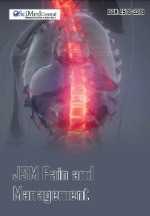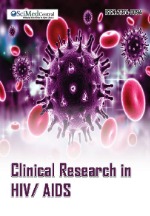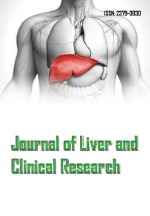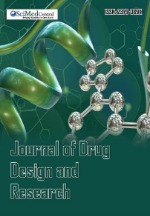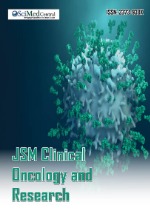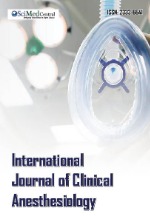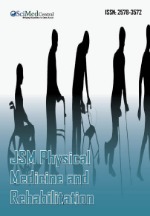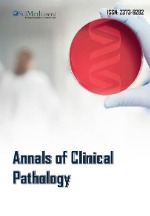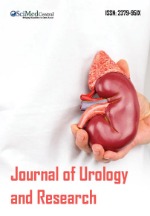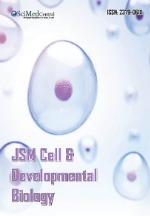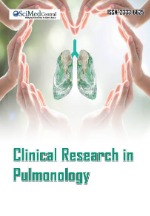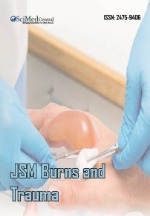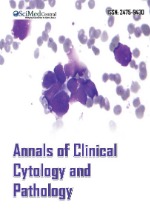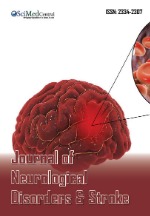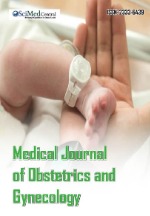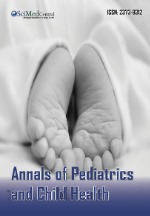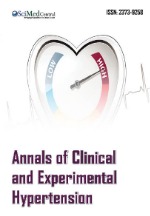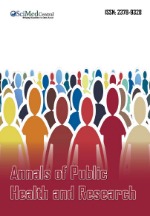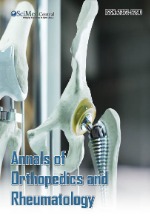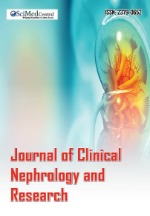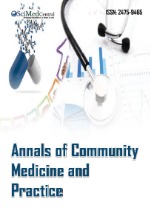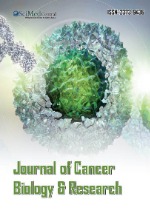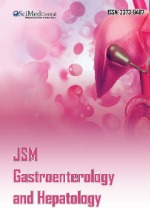Knowledge and Practice among Clinicians Regarding Patient Blood Management Initiatives
- 1. Department of Hematology, King Abdulaziz University, Saudi Arabia.
- 2. Blood Transfusion Services, King Abdulaziz University Hospital, Saudi Arabia.
- 3. Saudi Society of Transfusion Medicine & Blood Donation, Saudi Arabia.
- 4. Hematology Research Unit, King Fahd Medical Research Center, King Abdulaziz University, Saudi Arabia.
- 5. Blood Bank and Transfusion Services, Makkah Health Care Cluster, Saudi ministry of Health, Saudi Arabia.
Abstract
Background: Patient Blood Management (PBM) is a multimodal, multidisciplinary patient-centered strategy aimed at improving patient’s own blood. Anemia and transfusion have been associated with increased morbidity and mortality in surgical patients, and the systematic application of PBM programs in the perioperative period has been consistently found to improve patients’ clinical outcomes following surgery. Hospitals must strive towards the implementation of PBM that represents a new quality and safety standard.
Aims: The study aims to assess the knowledge, attitude and clinical practice of physicians who prescribe blood and its components to their patients regarding the PBM initiatives.
Materials and Methods: A survey-based cross-sectional study was conducted in 2021. The data was collected using a structured self-administered questionnaire distributed via online communication tools to the hospitals in Saudi Arabia. The population understudy consisted of physicians practicing in the following specialties: Surgery, Gynecology & Obstetrics, ICU, and Anesthesia.
Results: Responses from 102 physicians were received. Most of them 43 (33.3.%), were surgeons, and the rest were from anesthesia, intensive care, and obstetrics and gynecology divisions. The majority of these physicians were from governmental hospitals 75 (73.5%). Only 19 (18.6%) were consultant physicians.
13 (36.1%) of the participant in the ICU heard about PBM initiatives, 25 (39.7%) of the participants in the surgery section didn't hear about PBM initiatives. 28 (36.4%) of the participants mostly assess hemoglobin, coagulation screening, platelet count, and functions preoperatively before elective surgery in surgery.
There was a statistical significance for PBM initiatives, protocol, guidelines, a policy about the management of perioperative bleeding and management of preoperative bleeding. In addition, there was a statistical significant relation in management of patients with known coagulopathies/bleeding disorders, obtaining a standardized bleeding history preoperatively, and treatment of pre-operative anemia.
Conclusion: The level of knowledge about transfusion practices is still inadequate. More training is necessary for prescribers of blood products.
Learning from the working experiences, awareness, education and training on PBM are so important to set the evidence of health provider practices and to ensure medical and surgical outcomes by managing and preserving a patient’s blood according to health care practice.
These findings provide a baseline to develop joint action plans to further implement and strengthen PBM across hospitals in Saudi Arabia.
Keywords
• Patient Blood Management
• Pre- operative anemia
• Transfusion knowledge and practice
Citation
Hindawi S, Elgemmezi T, Yakout N, AL-Qurashi R, Badawi M (2025) Knowledge and Practice among Clinicians Regarding Patient Blood Management Initiatives. J Hematol Transfus 12(1): 1126.
INTRODUCTION
The term Patient Blood Management (PBM) was first used in 2005 by Professor James Isbister, an Australian hematologist, who realized that the focus of transfusion medicine should be changed from blood products to the patients [1].
PBM is a multimodal, multidisciplinary patient-centered strategy aimed at minimizing the use of blood products and improving patients’ outcomes. PBM has three main objectives:1) Improving red cell mass, including treatments such as erythropoiesis-stimulating agents, iron and vitamin supplements.2) Minimizing blood loss, e.g., by optimizing surgical and anesthetic techniques, treatment with Tranexamic acid (TXA), and autologous blood salvage.3) Harnessing and optimizing the tolerance of anemia by promoting maximum pulmonary and cardiac function and the use of a restrictive transfusion threshold [2].
Anemia and transfusion have been associated with increased morbidity and mortality in surgical patients, and the systematic application of PBM programs in the perioperative period has been consistently found to improve patients’ clinical outcomes following surgery [3].More recently, PBM programs have been extended to include non-surgical indications, and medical researchers have attempted to apply this approach to several medical conditions, including critically ill patients in Intensive Care Units (ICU), patients with liver disorders or heart failure, and in obstetrics [4].
Blood transfusion has many problems; like questionable safety, increasing costs and limited supply, and unknown efficacy. The next evolution in this area came from the transition from a 'product-centered approach' towards a 'patient centered' approach which means a focus on the patient outcome rather than the use of blood components, which gave birth to what we call 'Patient Blood Management'. PBM incorporates many different evidence-based surgical and also medical concepts to maintain hemoglobin concentration, optimize hemostasis and minimize blood loss to improve patient outcomes. PBM is increasingly adopted as part of routine practice, and it is expected to shift the face of transfusion medicine and the way blood components are used clinically [5]. Blood transfusion outcomes are undergoing renewed inspection by healthcare institutions to reduce blood utilization. In addition to accreditation organizations, professional societies are also well organized to incorporate blood transfusion outcomes as quality indicators in their recommendations and guidelines [6].
A study done by D.M. Baron about the evaluation of clinical practice in perioperative PBM stated that an essential part of perioperative PBM is the preoperative assessment of bleeding risk and about one-third of clinicians that completed the study's questionnaire rarely or never use structured patient interviews to assess bleeding risk before going into surgery. Moreover, in the same paper, only 24% of clinicians routinely assess patients at risk of bleeding during surgery for anemia, four to eight weeks before elective surgery. When anemia is diagnosed, less than 50% of clinicians routinely investigate its cause. Even fewer doctors supplement iron when iron deficiency anemia has been diagnosed. In addition, 56% of clinicians targeted a transfusion threshold of 7-9g/dl of hemoglobin during ongoing bleeding in patients without cardiovascular disease, while 37% targeted a transfusion threshold >9g/dl [7].
In the recent European Transfusion Practice and Outcome Study trial; mean hemoglobin concentration just before transfusion was 8.1 g/dl, and 2.5 units of packed RBCs were transfused at this threshold. More than 80% of transfusions were initiated by hypotension or tachycardia. Taken with each other, a restrictive transfusion strategy is more commonly applied in hemodynamically stable, than in actively bleeding patients [8].
Beyond beneficial effects on blood utilization, PBM associated improvements in clinical outcomes, specifically, a reduction in hospital-acquired infections and reduced lengths of stay, may further decrease the burden on an overwhelmed health care system [9].
Aim
This study aims to assess the knowledge, attitude and clinical practice of physicians who prescribe blood and its components to their patients regarding the PBM initiatives.
MATERIALS AND METHODS
Study type
A survey based cross-sectional, descriptive study.
Study settings
Conducted from June 2021 to November 2021 at Saudi Arabia hospitals.
Population and selection of participants
The participants of the study are: Obstetricians, surgeons, anesthesiologists and ICU physicians working at a hospital in Saudi Arabia. The method of physician selection was convenience sampling.
Data collection method
The data was collected using a structured self administered questionnaire distributed via online communication tools "Whats App, Email…etc." and in the form of a Google survey. The questionnaire was in the form of MCQs that consisted of: Physician's demographic information, assessment of perioperative bleeding risk, monitoring of perioperative bleeding, management of perioperative bleeding and blood-conserving strategies.
Study variables
Independent variables: Demographic information variables including "Field of practice, training status, hospital of residence", and knowledge questions.
Dependent variables: Practice variables.
Statistical analysis
Data was collected and managed using a statistical package for social sciences (SPSS), software version 25. Categorical data was presented as percentages and frequencies, while continuous data was presented as means and standard deviations.
For inferential statistics, the chi-square test of independence was used to test for the association between categorical variables and Pearson correlation between continuous and categorical variables. 95% confidence intervals was obtained, and a p-value of less than 0.05 was considered statistically significant.
Ethical approval
Ethical approval was obtained from the Research Ethics Committee at King Abdulaziz University Hospital (Reference No. 352-21), and a consent was taken from each participant before collecting the data.
RESULTS
We received responses from 102 physicians. Most of them 43 (33.3.%), were surgeons, and the rest were from anesthesia, intensive care, and obstetrics and gynecology divisions. The majority of these physicians were from governmental hospitals 75 (73.5%). Only 19 (18.6%), were consultant physicians.
In the knowledge section,13(36.1%),of the participant in the ICU reported hearing about PBM initiatives, 25 (39.7%), of the participant in the surgery section didn’t hear about PBM initiatives. 8 (36.4%), on the surgery section have a written protocol, guidelines, or a policy about the management of per-operative bleeding, 17 (33.3%), in anesthesia section don't have a written protocol, guidelines, or a policy about the management of perioperative bleeding. 11 (37.9%), in the surgery section have a written protocol, guidelines, or a policy about massive transfusion, 9 (31.1%), in anesthesia part don't have a written protocol, guideline, or policy about massive transfusion. 20 (36.4%), in the surgery section reported awareness about the management of preoperative bleeding, while 18 (38.3%), in Obstetrics and Gynecology section weren’t aware about the management of preoperative bleeding. 11 (35.5%), in the ICU section attended a presentation/discussion about the management of perioperative bleeding at a scientific meeting, while 28 (39.4%), in the surgery section didn’t attend a presentation/discussion about this subject. 25 (33.3%), in the surgery section believe that the current management of perioperative bleeding could be improved. In contrast, 4 (50.0%) in the anesthesia section didn’t believe in this issue. As shown in (Table 1).
Table 1: Knowledge about PBM for the primary field of practice
|
Question |
Categories |
Surgery |
Obstetrics and Gynecology |
ICU |
Anesthesia |
P-value |
|
Did you hear about PBM initiatives? |
No 63 (61.8%) |
25 (39.7%) |
16 (25.4%) |
8 (12.7%) |
14 (22.2%) |
0.038 |
|
Yes 36 (35.3%) |
9 (25.0%) |
7 (19.4%) |
13 (36.1%) |
7 (19.4%) |
||
|
Don’t know 3 (2.9%) |
0 (0.0%) |
0 (0.0%) |
1 (33.3%) |
2 (66.7%) |
||
|
Do you have a written protocol, guideline, or policy about the management of perioperative bleeding? |
No 51 (50%) |
14 (27.5%) |
5 (9.8%) |
15 (29.4%) |
17 (33.3%) |
0.003 |
|
Yes 22 (21.6%) |
8 (36.4%) |
6 (27.3%) |
4 (18.2%) |
4 (18.2%) |
||
|
Don’t know 29 (28.4%) |
12 (41.4%) |
12 (41.4%) |
3 (10.3%) |
2 (6.9%) |
||
|
Do you have a written protocol, guideline, or policy about massive transfusion? |
No 45 (44.1%) |
13 (28.9%) |
9 (20.0%) |
14 (31.1%) |
9 (20.0%) |
0.190 |
|
Yes 29 (28.4%) |
11 (37.9%) |
4 (13.8%) |
5 (17.2%) |
9 (31.0%) |
||
|
Don’t know 28 (27.5%) |
10 (35.7%) |
10 (35.7%) |
3 (10.7%) |
5 (17.9%) |
||
|
Are you aware about management of perioperative bleeding? |
No 47 (46.1%) |
14 (29.8%) |
18 (38.3%) |
4 (8.5%) |
11 (23.4%) |
0.001 |
|
Yes 55 (53.9%) |
20 (36.4%) |
5 (9.1%) |
18 (32.7%) |
12 (21.8%) |
||
|
Did you attend a presentation/ discussion about the management of perioperative bleeding? |
No 71 (69.6%) |
28 (39.4%) |
18 (25.4%) |
11 (15.5%) |
14 (19.7%) |
0.04 |
|
Yes 31 (30.4%) |
6 (19.4%) |
5 (16.1%) |
11 (35.5%) |
9 (29.0%) |
||
|
Do you believe that the current management of perioperative bleeding could be improved? |
No 8 (7.8%) |
2 (25.0%) |
2 (25.0%) |
0 (0.0%) |
4 (50.0%) |
0.317 |
|
Yes 75 (73.5%) |
25 (33.3%) |
16 (21.3%) |
20 (26.7%) |
14 (18.7%) |
||
|
Don’t know 19 (18.6%) |
6 (31.6%) |
5 (26.3%) |
4 (21.1%) |
4 (21.1%) |
There was a statistical significance for PBM initiatives (p-value=0.038), protocol, guidelines, or a policy about the management of perioperative bleeding (p-value=0.003), management of perioperative bleeding (p-value=0.001), attending presentation/discussion about the management of perioperative bleeding (p-value=0.04). In contrast, there was no statistical significance in protocol, guideline, or policy about massive transfusion (p- value= 0.190), and the belief in improving current management of perioperative bleeding (p-value=0.317).
Concerning to practice, 28 (36.4%), of the participants reported that they mostly assess hemoglobin, coagulation screening, platelet count, and functions preoperatively before elective surgery in surgery, and 8 (42.1%), assess half of the time in Obstetrics and Gynecology, but 2 (33.3%) rarely or never assess at both surgery and ICU. 13 (39.4%) mostly manage patients with known coagulopathies/bleeding disorders in collaboration with a hematologist in surgery, and 7 (41.2%), manage half of the time in ICU, but 18 (34.6%), rarely or never manage in Obstetrics and Gynecology. 18 (36.0%), mostly obtain a standardized bleeding history preoperatively in surgery, and 14 (37.8%), obtained half of the time in surgery, but 9 (60.0%), are rarely or never obtain in anesthesia. 10 (37.0%), use transfusion algorithms or triggers to guide hemostatic interventions during intraoperative bleeding in ICU, and 11 (35.5%), do sometimes in surgery, but 6 (13.6%), don’t use transfusion algorithms or triggers to guide hemostatic interventions during intraoperative bleeding in ICU. 8 (66.7%), used 10g/dl, Hb trigger, in patients without cardiovascular disease in surgery, but the lowest percent was in both ICU and Obstetrics and Gynecology section nearly 1 (8.3%). In patients with cardiovascular disease or other comorbid diseases , 19 (45.2%), in surgery used Hb trigger 10g/dl, but the lowest percent was in both ICU and anesthesia, it doesn’t use among specific patients, 18 (29.5%), in both surgery and anesthesia of clinical reassessment and Hb check following each single red blood cell unit due to red blood cell transfusion is needed in a stable non-bleeding patient, 13 (33.3%), of clinical reassessment and Hb check following two red blood cell units in Obstetrics and Gynecology and 2 (100%), of at least two units of red blood cells in surgery, 19 (38.0%), of routinely treat preoperative anemia in surgery. 10 (35.7%), half of the time assess anemia for the risk of bleeding during surgery 4-8 weeks before elective surgery in surgery and Obstetrics and Gynecology. 14 (38.9%), rarely or never investigate the cause of anemia when diagnosed during preoperative testing. 16 (41.0%), rarely or never correct anemia caused by iron deficiency with iron supplementation before elective surgery in surgery, 6 (40.0%), half of the time correct anemia with erythropoietin-stimulating agents before elective surgery in both surgery and ICU. 1 (50.0%), half of the time use red cell salvage devices in major surgery to reduce the exposure to allogeneic red blood cell transfusion in both surgery and ICU. 23 (44.2%), rarely or never use Tranexamic acid to reduce perioperative blood loss and transfusion requirements for surgeries with high bleeding risk in surgery (Table 2).
Table 2: Practice for Primary field of practice group
|
Question |
Categories |
Surgery |
Obstetrics and Gynecology |
ICU |
Anesthesia |
P-value |
|
Do you assess hemoglobin, coagulation screening, platelet count, and functions preoperatively before elective surgery? |
Mostly |
28 (36.4%) |
14 (18.2%) |
19 (24.7%) |
16 (20.8%) |
0.126 |
|
Half of the time |
4 (21.1%) |
8 (42.1%) |
1 (5.3%) |
6 (31.6%) |
||
|
Rarely or never |
2 (33.3%) |
1 (16.7%) |
2 (33.3%) |
1 (16.7%) |
||
|
Do you manage patients with known coagulopathies/bleeding disorders in collaboration with a hematologist? |
Mostly |
13 (39.4%) |
5 (15.2%) |
11 (33.3%) |
4 (12.1%) |
0.001 |
|
Half of the time |
6 (35.3%) |
0 (0.0%) |
7 (41.2%) |
4 (23.5%) |
||
|
Rarely or never |
15 (28.8%) |
18 (34.6%) |
4 (7.7%) |
15 (28.8%) |
||
|
Do you obtain a standardized bleeding history preoperatively? |
Mostly |
18 (36.0%) |
10 (20.0%) |
7 (34.0%) |
5 (10.0%) |
0.001 |
|
Half of the time |
14 (37.8%) |
11 (29.7%) |
3 (8.1%) |
9 (24.3%) |
||
|
Rarely or never |
2 (13.3%) |
2 (13.3%) |
2 (13.3%) |
9 (60.0%) |
||
|
Do you use transfusion algorithms or triggers to guide hemostatic interventions during intraoperative bleeding? |
No |
15 (34.1%) |
14 (31.8%) |
6 (13.6%) |
9 (20.5%) |
0.220 |
|
Yes |
8 (29.6%) |
4 (14.8%) |
10 (37.0%) |
5 (18.5%) |
||
|
Sometimes |
11 (35.5%) |
5 (16.1%) |
6 (19.4%) |
9 (29.0%) |
||
|
What is the Hb trigger used for in patients without cardiovascular disease? |
7 g/dl |
4 (15.4%) |
6 (23.1%) |
10 (38.5%) |
6 (23.1%) |
0.039 |
|
8 g/dl |
9 (25.0%) |
9 (25.0%) |
6 (16.7%) |
12 (33.3%) |
||
|
9 g/dl |
13 (46.4%) |
7 (25.0%) |
5 (17.9%) |
3 (10.7%) |
||
|
10 g/dl |
8 (66.7%) |
1 (8.3%) |
1 (8.3%) |
2 (16.7%) |
|
What is the Hb trigger used for in patients with cardiovascular disease or other comorbid diseases? |
7 g/dl |
2 (50.0%) |
2 (50.0%) |
0 (0.0%) |
0 (0.0%) |
0.108 |
|
8 g/dl |
3 (16.7%) |
2 (11.1%) |
8 (44.4%) |
5 (27.8%) |
||
|
9 g/dl |
10 (26.3%) |
11 (28.9%) |
7 (18.4%) |
10 (26.3%) |
||
|
10 g/dl |
19 (45.2%) |
8 (19.0%) |
7 (16.7%) |
8 (19.0%) |
||
|
What is the red blood cell transfusion needed in a stable non-bleeding patient |
Clinical reassessment and Hb check following each single red blood cell unit |
18 (29.5%) |
10 (16.4%) |
15 (24.6%) |
18 (29.5%) |
0.091 |
|
Clinical reassessment and Hb check following two red blood cell units |
14 (35.9%) |
13 (33.3%) |
7 (17.9%) |
5 (12.8%) |
||
|
At least two units of red blood cells |
2 (100.0%) |
0 (0.0%) |
0 (0.0%) |
0 (0.0%) |
||
|
Do you routinely treat pre-operative anemia? |
No |
15 (28.8%) |
18 (34.6%) |
4 (7.7%) |
15 (28.8%) |
<0.001 |
|
Yes |
19 (38.0%) |
5 (10.0%) |
18 (36.0%) |
8 (16.0%) |
||
|
Do you assess anemia for the risk of bleeding during surgery 4-8 weeks before elective surgery |
mostly |
3 (25.0%) |
3 (25.0%) |
2 (16.7%) |
4 (33.3%) |
0.337 |
|
half of the time |
10 (35.7%) |
10 (35.7%) |
5 (17.9%) |
3 (10.7%) |
||
|
Rarely or never |
21 (33.9%) |
10 (16.1%) |
15 (24.2%) |
16 (25.8%) |
||
|
How often do you investigate the cause of anemia, if anemia is diagnosed during preoperative testing? |
Mostly |
13 (31.0%) |
5 (11.9%) |
16 (38.1%) |
8 (19.0%) |
0.029 |
|
Half of the time |
7 (29.2%) |
7 (29.2%) |
3 (12.5%) |
7 (29.2%) |
||
|
Rarely or never |
14 (38.9%) |
11 (30.6%) |
3 (8.3%) |
8 (22.2%) |
||
|
Do you correct anemia caused by iron deficiency with iron supplementation before elective surgery |
Mostly |
12 (35.3%) |
6 (17.6%) |
11 (32.4%) |
5 (14.7%) |
0.210 |
|
Half of the time |
6 (20.7%) |
8 (27.6%) |
7 (24.1%) |
8 (27.6%) |
||
|
Rarely or never |
16 (41.0%) |
9 (23.1%) |
4 (10.3%) |
10 (25.6%) |
||
|
How frequently do you correct anemia with erythropoietin-stimulating agents before elective surgery? |
Mostly |
5 (31.3%) |
4 (25.0%) |
6 (37.5%) |
1 (6.3%) |
0.017 |
|
Half of the time |
6 (40.0%) |
3 (20.0%) |
6 (40.0%) |
0 (0.0%) |
||
|
Rarely or never |
23 (32.4%) |
16 (22.5%) |
10 (14.1%) |
22 (31.0%) |
||
|
Do you use red cell salvage devices in major surgery to reduce the exposure to allogeneic red blood cell transfusion? |
No, I don’t use it |
25 (33.3%) |
20 (26.7%) |
14 (18.7%) |
16 (21.3%) |
0.730 |
|
Mostly |
2 (40.0%) |
0 (0.0%) |
2 (40.0%) |
1 (20.0%) |
||
|
Half of the time |
1 (50.0%) |
0 (0.0%) |
1 (50.0%) |
0 (0.0%) |
||
|
Rarely or never |
5 (26.3%) |
3 (15.8%) |
5 (26.3%) |
6 (31.6%) |
||
|
Do you use Tranexamic acid to reduce perioperative blood loss and transfusion requirements for surgeries with high bleeding risk? |
Mostly |
4 (22.2%) |
2 (11.1%) |
5 (27.8%) |
7 (38.9%) |
0.022 |
|
Half of the time |
6 (19.4%) |
6 (19.4%) |
10 (32.3%) |
9 (29.0%) |
||
|
Rarely or never |
23 (44.2%) |
15 (28.8%) |
7 (13.5%) |
7 (13.5%) |
A statistical significance was present in management of patients with known coagulopathies/bleeding disorders in collaboration with a hematologist (p-value=0.001), obtaining a standardized bleeding history preoperatively (p-value=0.001), Hb trigger used for in patients without cardiovascular disease (p-value=0.039), routinely treat preoperative anemia (p-value=<0.001), investigate the cause of anemia, if anemia is diagnosed during preoperative testing (p-value=0.029), correction of anemia with erythropoietin-stimulating agents before elective surgery (p-value=0.017), and the use of Tranexamic acid to reduce perioperative blood loss and transfusion requirements for surgeries with high bleeding risk (p-value=<0.022) (Table 2).
DISCUSSION
Patient blood management is designed to improve the quality of healthcare and decrease the dependency on blood donation. The hospitals are different according to their types such as governmental hospitals, university hospitals, military hospitals, medical cities, and private hospitals. This classification and types of hospitals show a similar range of clinical procedures associated with patient blood management.
Understanding the gap between the theoretical and applied practice is essential to deal with patients' status and show its relation with physicians about PBM. PBM sets the evidence of health provider practices to ensure medical and surgical outcomes by managing and preserving a patient’s blood according to health care practice in many fields such as the primary field of practice, then turning this management procedure into a daily routine among health care locations such as hospitals, clinics, etc., [10,11].
Avoiding asymmetry behavior and information within the hospital, and sections such as surgery, Obstetrics and Gynecology, ICU, and anesthesia on PBM requires to follow the entire clinical staff activities through the hospital sections to influence decisions related to managing patients' blood [12].
General expectation suggested that clinical knowledge and skills for PBM must be introduced with suitable information in medical schools, accredited continuing medical education, PBM academies, and e-learning-an information platform.
The higher knowledge about PBM was among the surgery section. However, the presence of protocol, guidelines, or a policy about the management of perioperative bleeding, massive transfusion is required to emphasize the exact practice procedure to control the blood of patients according to surgical or other medical interventions.
The established and continuous check-up of the exact application of guidelines, instruction, and protocol by the ministry of health among various hospitals, healthcare providers, and the education of the physician are essentials for a successful PBM.
The good result and specific laboratory test results about the care and enough knowledge about blood management help to provide a high percentage of knowledge in the healthcare provider have positive results to control complication after surgery and improve the overall health management system [13-14].
In several countries, PBM was implemented from the bottom-up such as department level or hospital level, and top-down are provided by the policy and hospital administrative leadership, with the huge variation in the relation of the interaction between operational and policy levels [15].
CONCLUSION
Increasing the quality of life and patient safety are the major goals for the quality and blood management system throughout the hospital sections. This requires changing work practice and knowledge for communication and collaboration and improving the experience with PBM.
The level of knowledge about transfusion practices is still inadequate. More training is necessary for prescribers of blood products.
Learning from the working experiences, awareness, education and training on PBM are so important to set the evidence of health provider practices and to ensure medical and surgical outcomes by managing and preserving a patient’s blood according to health care practice.
These findings provide a baseline to develop joint action plans to further implement and strengthen PBM across hospitals in Saudi Arabia.
REFERENCES
- Isbister J. Why should health professionals be concerned about blood management and blood conservation? Updates in Blood Conservation and Transfusion Alternatives. 2005; 2: 3-7.
- Franchini M, Muñoz M. Towards the implementation of patient blood management across Europe. Blood transfusion. Trasfusione del sangue, 2017; 15: 292-293.
- Spahn DR, Theusinger OM, Hofmann A. Patient blood management is a win-win: a wake-up call. Br J Anesthesia. 2012; 108: 889-892.
- Peters J, Pendry K. Patient blood management: an update of current guidance in clinical practice. Br J Hosp Med (Lond). 2017; 78: 88-95.
- Shander A, Hofmann A, Isbister J, Van Aken H. Patient blood management – The new frontier. Best Pract Res Clin Anesthesiol. 2013; 27: 5-10.
- Goodnoug L, Shander A, Riou B. Patient Blood Management. Anesthesiol. 2012; 116: 13671376.
- Baron D M, Metnitz PG, Fellinger T, Metnitz B, Rhodes A, Kozek- Langenecker SA. Evaluation of clinical practice in perioperative patient blood management. Br J Anesth. 2016; 117: 610-616.
- Meier J, Filipescu D, Kozek-Langenecker S, Llau Pitarch J, Mallett S, Martus P, et al. collaborators. Intraoperative transfusion practices in Europe. Br J Anesth. 2016; 116: 255-261.
- Shander A, Goobie S, Warner M, Aapro M, Bisbe E, Perez-Calatayud A,. et al. Essential Role of Patient Blood Management in a Pandemic: A Call for Action. Anesthesia Analgesia. 2020; 131: 74-85.
- Hofmann A, Spahn D R, Holtorf AP. Making patient blood management the new norm (al) as experienced by implementors in diverse countries. BMC Health Serv Res. 2021; 21: 1-19.
- Hofmann A, Friedman D, Farmer S. Western Australian Patient Blood Management Project 2008–2012: analysis, strategy, implementation, and financial projections. Perth, Western Australia: Medicine and Economics. 2007.
- Meybohm P, Richards T, Isbister J, Hofmann A, Shander A, Goodnough LT, et al. Patient blood management bundles to facilitate implementation. Transfus Med Rev. 2017; 31: 62-71.
- Spahn DR, Bouillon B, Cerny V, Duranteau J, Filipescu D, Hunt BJ, et al. The European guideline on management of major bleeding and coagulopathy following trauma. Crit Care. 2019; 23: 1-74.
- Trentino KM, Swain SG, Geelhoed GC, Daly FF, Leahy MF. Interactive patient blood management dashboards used in Western Australia. Transfusion. 2016; 56: 3140-3141.
- Leahy MF, Hofmann A, Towler S, Trentino KM, Burrows SA, Swain SG, Farmer SL. Improved outcomes and reduced costs associated with a health-system–wide patient blood management program: a retrospective observational study in four major adult tertiary-care hospitals. Transfusion. 2017; 57: 1347-1358.


